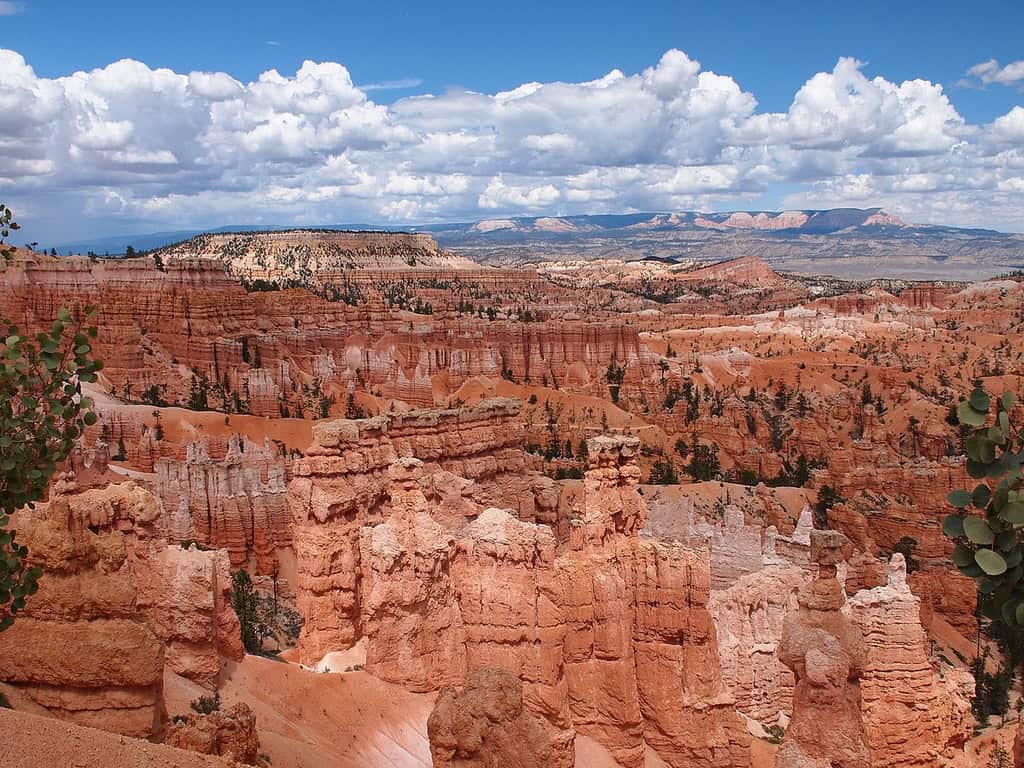
Bryce Canyon National Park, located in southern Utah, is one of America’s most iconic and visually stunning natural landscapes. Famous for its unique geological formations known as hoodoos, Bryce Canyon offers a rich tapestry of natural beauty, history, and ecological diversity. This article delves into the various aspects of Bryce Canyon, from its geological wonders and ecological significance to its historical background and recreational opportunities.
Geological Marvels
Bryce Canyon is not a single canyon but rather a series of natural amphitheaters or bowls carved into the edge of a high plateau. The park’s most distinguishing features are its hoodoos—tall, thin spires of rock that protrude from the bottom of arid basins. These hoodoos are formed through the processes of weathering and erosion, primarily by frost-wedging and the slightly acidic rainwater that dissolves the limestone.
The geological history of Bryce Canyon is a tale that spans millions of years. The rocks that make up the canyon were formed during the Cretaceous, Paleocene, and Eocene epochs. These sedimentary layers, composed of limestone, siltstone, dolomite, and mudstone, were deposited in various ancient lakes and inland seas that once covered the region. Over time, the uplift of the Colorado Plateau, combined with the freeze-thaw cycles of the region’s harsh winters, sculpted the intricate landscape seen today.
The vibrant colors of Bryce Canyon’s rock formations add to the park’s allure. The reds, oranges, and pinks result from the presence of iron and manganese oxides within the rock layers. These vivid hues create dramatic contrasts, especially during sunrise and sunset, when the interplay of light and shadow accentuates the hoodoos’ otherworldly shapes.
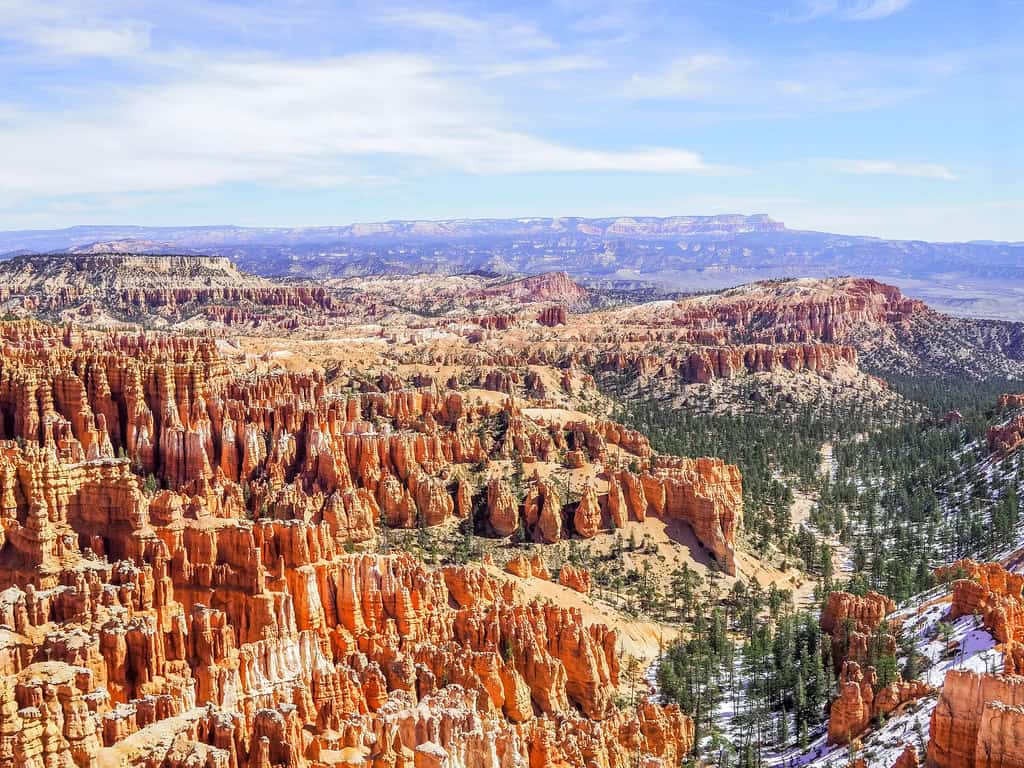
Ecological Significance
Bryce Canyon’s elevation, ranging from 6,620 to 9,115 feet (2,018 to 2,778 meters), contributes to its ecological diversity. The park encompasses three distinct climatic zones: the spruce/fir forest at higher elevations, the ponderosa pine forest at mid-elevations, and the pinyon pine/juniper forest at lower elevations. This variety of habitats supports a wide range of plant and animal species.
Flora within the park includes over 400 species of plants. The high elevation areas are home to blue spruce, Douglas fir, and aspen, while the mid-elevations feature ponderosa pines and manzanita. The lower elevations support pinyon pines, junipers, and various shrubs adapted to the arid environment.
Bryce Canyon is also a haven for wildlife. Mule deer, elk, and pronghorn are commonly seen grazing in the meadows, while mountain lions and black bears inhabit the more remote areas. The park is a designated bird-watching destination, with over 200 species recorded, including peregrine falcons, golden eagles, and the endangered California condor. The diversity of species reflects the park’s varied habitats and its importance as a biological refuge.
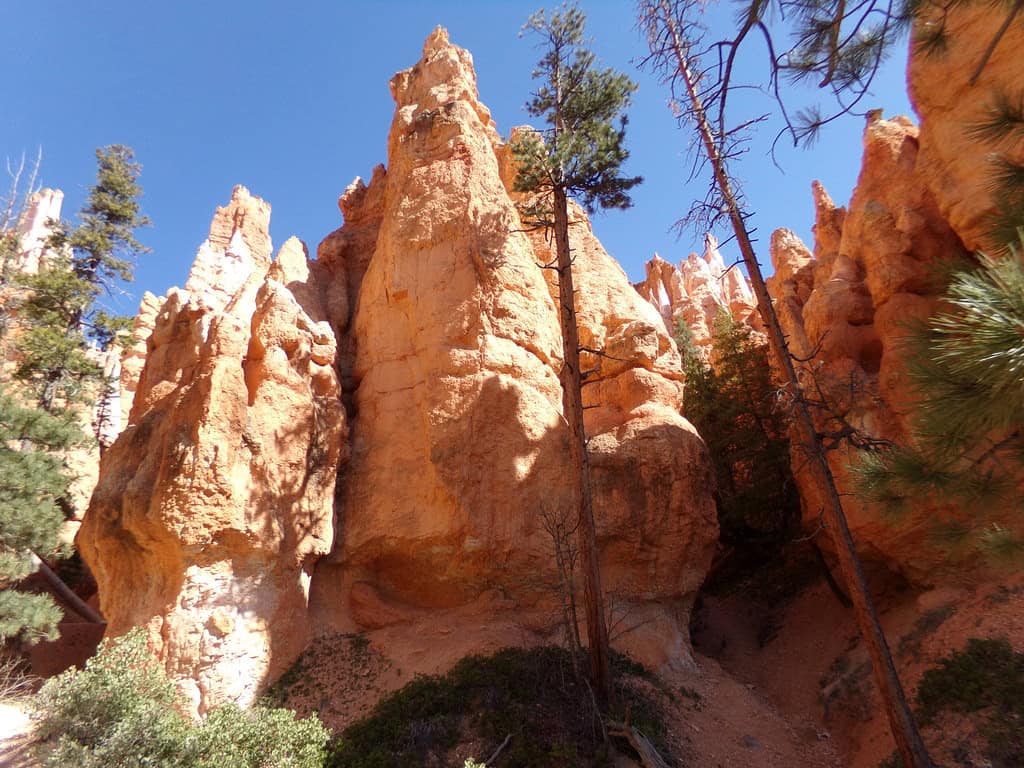
Historical and Cultural Background
The history of human habitation in the Bryce Canyon area dates back thousands of years. Archaeological evidence suggests that Native American groups, including the Ancestral Puebloans and the Fremont people, lived in the region. These early inhabitants left behind artifacts such as pottery, tools, and rock art, providing insights into their way of life.
The Paiute people, who called the area home before European settlers arrived, named the canyon “Angka-ku-wass-a-wits,” which means “red painted faces.” They believed that the hoodoos were ancient people turned to stone by the trickster god Coyote, a testament to the canyon’s mysterious and awe-inspiring formations.
In the late 18th and early 19th centuries, European-American explorers and settlers began to venture into the region. The canyon is named after Ebenezer Bryce, a Mormon settler who homesteaded in the area in the late 1800s. Bryce, who described the canyon as a “hell of a place to lose a cow,” used the land primarily for grazing and timber.
Bryce Canyon’s status as a national treasure was solidified in 1923 when it was designated as a national monument by President Warren G. Harding. It was re-designated as a national park in 1928. This recognition helped preserve the canyon’s unique landscapes and ensured its protection for future generations.
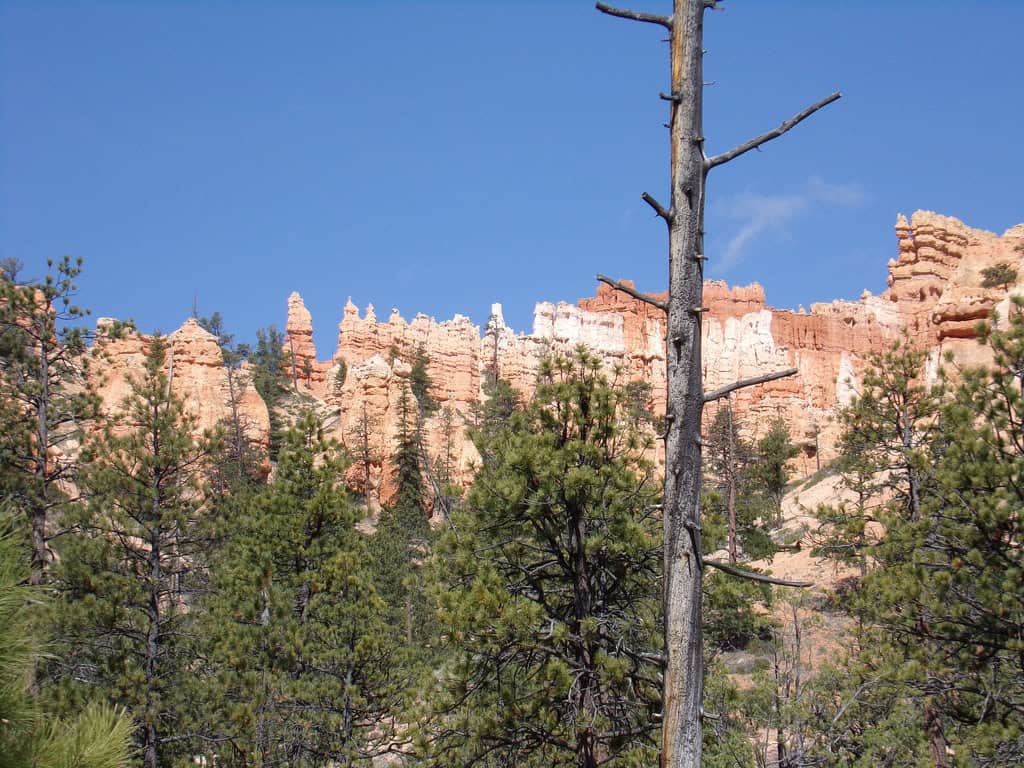
Conservation and Environmental Efforts
Conservation has always been a priority at Bryce Canyon National Park. The National Park Service (NPS) works diligently to preserve the park’s natural and cultural resources. Efforts include habitat restoration, invasive species management, and monitoring of wildlife populations.
One of the significant conservation challenges facing Bryce Canyon is the impact of climate change. Changes in temperature and precipitation patterns can affect the park’s ecosystems, water resources, and the freeze-thaw cycles crucial for hoodoo formation. The NPS is actively engaged in climate change research and adaptive management strategies to mitigate these impacts.
Air quality is another concern, as pollution from distant urban and industrial areas can affect the park’s visibility and health of its flora and fauna. Bryce Canyon is part of the Interagency Monitoring of Protected Visual Environments (IMPROVE) network, which tracks air quality and works to reduce pollution levels.

Recreational Opportunities
Bryce Canyon offers a wide range of recreational activities for visitors, making it a popular destination for outdoor enthusiasts. Hiking is one of the most favored activities, with over 50 miles of trails that range from easy walks to strenuous backcountry routes. The Rim Trail provides breathtaking views along the edge of the amphitheaters, while trails like Navajo Loop and Queen’s Garden take hikers down into the canyon to experience the hoodoos up close.
For those seeking a more immersive experience, Bryce Canyon offers backcountry camping permits. This allows visitors to explore the park’s more remote areas and enjoy its natural beauty in solitude. The Under-the-Rim Trail, a 23-mile trek, provides a challenging but rewarding journey through the park’s diverse landscapes.
Stargazing is another highlight at Bryce Canyon, thanks to its remote location and high elevation, which provide exceptionally clear night skies. The park is designated as an International Dark Sky Park, and ranger-led astronomy programs and full-moon hikes are popular activities that introduce visitors to the wonders of the night sky.
Winter transforms Bryce Canyon into a snowy wonderland, offering unique recreational opportunities such as cross-country skiing, snowshoeing, and winter hiking. The contrast of snow against the red rock formations creates a magical and serene landscape.
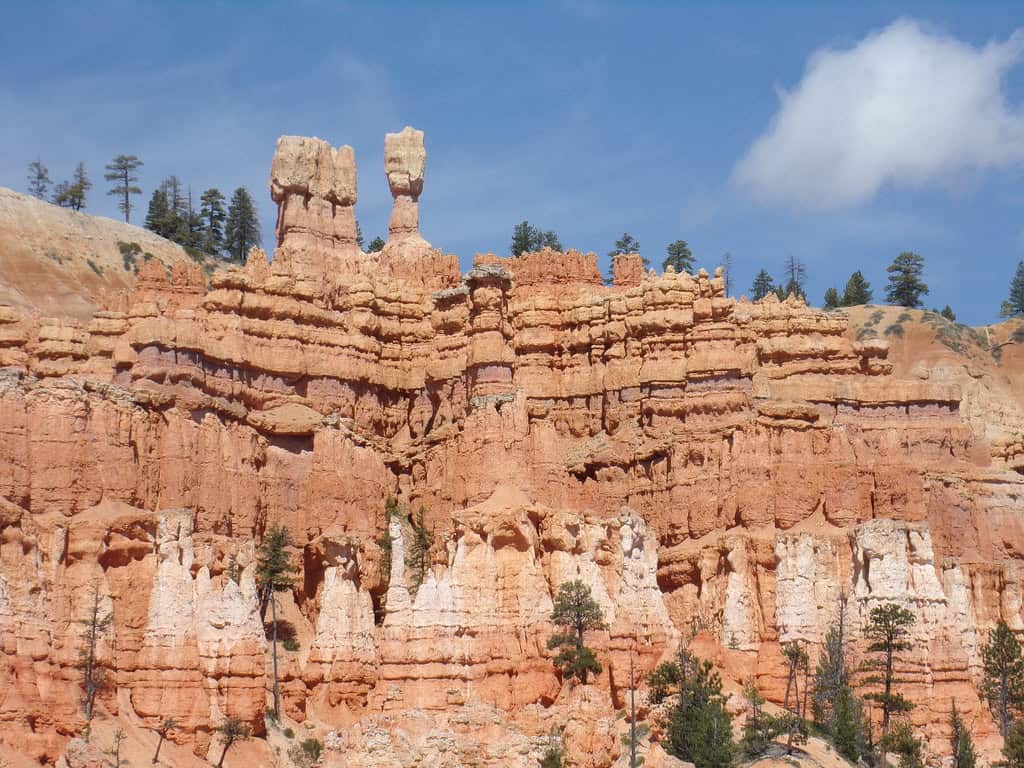
Visitor Facilities and Education
Bryce Canyon National Park is equipped with facilities designed to enhance the visitor experience while preserving its natural resources. The Bryce Canyon Visitor Center serves as the main hub for information, exhibits, and educational programs. Interactive displays provide insights into the park’s geology, ecology, and history, while park rangers are available to answer questions and offer guidance.
The visitor center also hosts a theater where visitors can watch an introductory film about the park. This film provides a comprehensive overview of Bryce Canyon’s natural wonders and the importance of conservation efforts.
Educational programs are a key component of Bryce Canyon’s mission. The park offers a variety of ranger-led programs, including guided hikes, geology talks, and wildlife presentations. These programs are designed to educate visitors about the park’s unique features and promote environmental stewardship.
For those who prefer self-guided exploration, the park has numerous interpretive trails and informational signs that provide context and background on the park’s geology, ecology, and cultural history. The Scenic Drive, a 18-mile road, features several viewpoints and overlooks that offer panoramic vistas of the canyon’s amphitheaters and hoodoos.
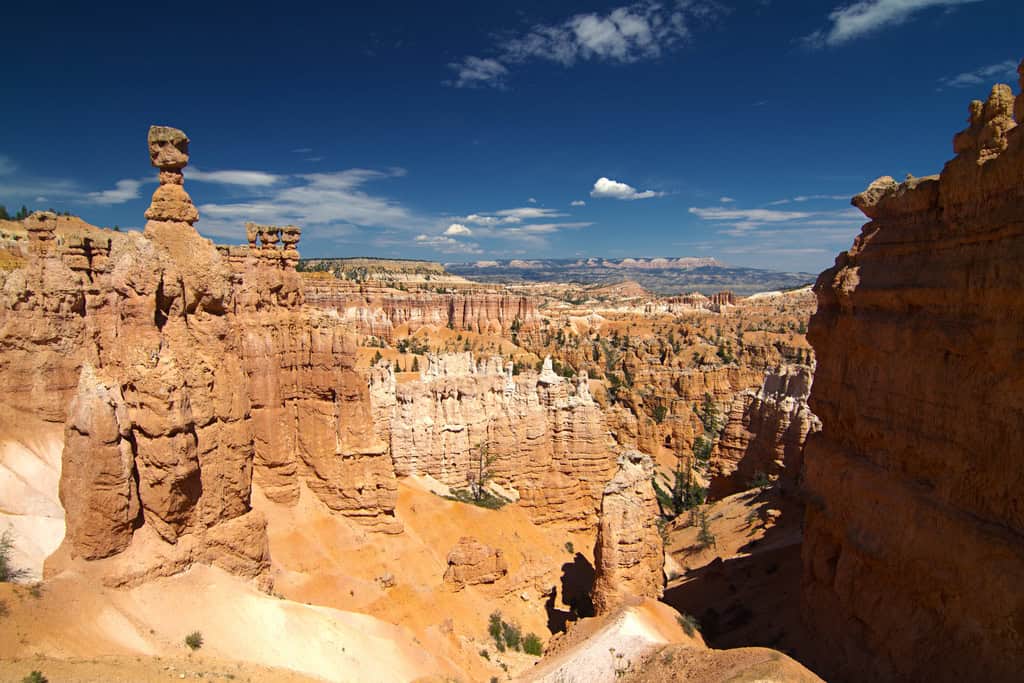
The Broader Impact of Bryce Canyon
Bryce Canyon’s influence extends beyond its boundaries. The park is part of the Grand Staircase, a series of sedimentary rock layers that stretch from the Grand Canyon in Arizona to Bryce Canyon in Utah. This geological feature provides a continuous record of Earth’s history over hundreds of millions of years, making it a valuable resource for scientific study.
The park’s commitment to conservation and education serves as a model for other protected areas. By promoting sustainable tourism and fostering an appreciation for the natural world, Bryce Canyon helps to inspire a broader awareness of environmental issues and the importance of preserving our planet’s natural heritage.
Bryce Canyon National Park is a testament to the beauty and power of nature. Its iconic hoodoos, diverse ecosystems, and rich cultural history make it a destination of unparalleled wonder. Through ongoing conservation efforts and educational programs, the park continues to protect and share its unique landscapes with visitors from around the world.
As we look to the future, the preservation of Bryce Canyon’s natural and cultural resources remains a priority. By embracing sustainable practices and fostering a deep respect for the environment, we can ensure that this natural wonder continues to inspire and captivate future generations. Bryce Canyon stands as a symbol of our shared responsibility to protect and cherish the natural world, reminding us of the delicate balance that sustains life on Earth.